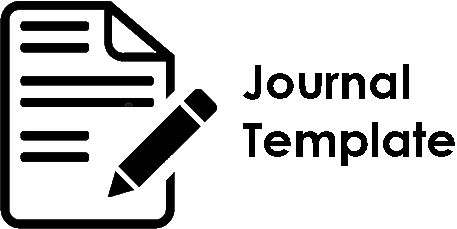TUBING STRENGTH ANALYSIS AND FAILURE ASSESSMENT OF ELECTRICAL SUBMERSIBLE PUMP (ESP) WELL: A CASE STUDY ON PRODUCTION WELL “X”
DOI:
https://doi.org/10.31315/jmel.v6i2.7701Abstract
This study will discuss the evaluation of tubing strength in Well X that using Electrical Submersible Pump as an artificial lifting method. The evaluation will be carried out to determine the risk of failure of production tubing due to erosional damage and the failure due to loads on tubing during production operation using Electrical Submersible Pump. Burst, collapse, and tension loads will be the main focus in evaluating the tubing load by considering the worst conditions that may be experienced during production operation. The calculation of the tubing load is done using Microsoft Excel. The result of tubing load calculation will be compared with the tubing rating based on tubing grade. Erosional damage prediction is carried out using software to determine the erosional velocity on the production tubing.
This study will evaluate the production tubing used in Well X with an outer diameter of 3.5 inch and L-80 tubing grade. Tubing L-80 has a burst rating of 7240 psi, a collapse rating of 10533.92 psi, and a tension rating of 107581.11 lbf. Tubing is rating will be the limit that determines the integrity of the well during the production period. Based on the evaluation result, L-80 production tubing that using Electrical Submersible Pump as an artificial lifting method is able to withstand the burst load, collapse load, tension load, and the erosional effect of the produced fluid. Therefore, the Electrical Submersible Pump in Well X as an artificial lift system can be carried out without changing the grade of the existing tubing production.
References
Adams, N. J. (1985). Drilling Engineering. Oklahoma: Penwell Publishing Company.
American Petroleum Institute (API). (2011). API Spec 5CT: Specification for Casing and Tubing, ninth ed. American Petroleum Institute (API). Washington, D. C.: American Petroleum Institute (API).
American Petroleum Institute. (1991). API RP14E: Recommended Practice for Design and Installation of Offshore Production Platform Piping Systems (5th ed.). Dallas: API.
Bellarby, J. (2009). Well Completion Design. Amsterdam: Elsevier.
Bourgoyne Jr., A. T., Millheim, K. K., Chenevert, M. E., & Young Jr., F. S. (1986). Applied Drilling Engineering, Vol 2. Richardson, Texas: Society of Petroleum Engineers.
Guo, B., Lyons, W. C., & Ghalambor, A. (2007). Petroleum Production Engineering: A Computer-Assisted Approach. Lafayette: Elsevier.
Miska, R. S. (2011). Fundamentals of Drilling Engineering. USA: Society of Petroleum Engineers.
Takacs, G. (2018). Electrical Submersible Pumps Manual: Design, Operations, and Maintenance (2nd ed.). Cambridge: Elsevier.
Downloads
Published
Issue
Section
License
Authors who publish with this journal agree to the following terms:
- Authors retain copyright and grant the journal right of first publication with the work simultaneously licensed under a Creative Commons Attribution License that allows others to share the work with an acknowledgement of the work's authorship and initial publication in this journal.
- Authors are able to enter into separate, additional contractual arrangements for the non-exclusive distribution of the journal's published version of the work (e.g., post it to an institutional repository or publish it in a book), with an acknowledgement of its initial publication in this journal.
- Authors are permitted and encouraged to post their work online (e.g., in institutional repositories or on their website) prior to and during the submission process, as it can lead to productive exchanges, as well as earlier and greater citation of published work (See The Effect of Open Access).



